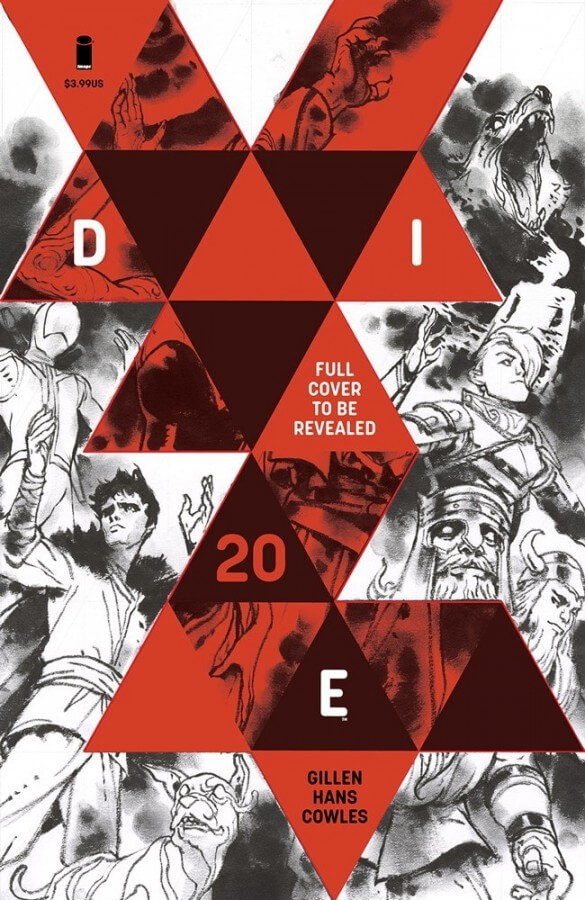“…you were a place to learn lessons and their costs…”
We’re finally here, the last issue: keep reading for a review of Die #20.
(Very minor spoilers below, but I do hint at a lot of things.)
It’s been a real treat, getting to see Stephanie Hans’ art every month or so. I fell in love with her work back in 2014 when Angela: Asgard’s Assassin #1 came out, so I was over the moon when I first heard she would be the artist for Die.
Every issue there’s always at least one panel that I want to linger over, and for this one it was the shot of the Party as they listened to Chuck’s speech, the closeup of Ash’s eyes right after she says “..you are for all of that…”, Izzy sitting on the floor near a window, Angela’s face when she says “I’m sorry” and also when she says “..you can fall…” I hope someday some of her covers are available as posters, I’ve got my eye on a dozen or so. (Some of them are already available!)
As for the story, it’s always tough to review the final comic of a series, because there’s so much I want to talk about, but I really don’t want to spoil it. To be super, annoyingly vague: not everyone’s ending in this story is a happy one, but I thought they were all satisfying. And Kieron didn’t try to pull a “..and it was all a dream” ending either, thank goodness.
(Side note: Kieron includes something near the end of the story, a moment that does better than anything else to show the passage of time. It really grounds the story, makes it feel even more real, in a scary, almost bittersweet way, and it was totally unexpected. I won’t spoil it, but I thought it was a great choice.)
While I did have to read the issue a couple times, I think I understand what happened in the end, and why the world of Die exists. Of course I can’t go into detail about that, because spoilers, but a big part of it was answering the question: why do people play role playing games anyway?
This series is a love letter to RPGs, tracing their creation from a military game in 1811 to the Bronte siblings’ stories, Tolkien’s experiences in World War 1, and beyond. (Including a brief mention of CS Lewis…I just now realized we never got to see Narnia. Listen here Kieron, you cost me a Stephanie Hans depiction of Aslan, I call shenanigans!!) (Kidding.) (Mostly.)
(Edit: NEVER MIND I FORGOT ABOUT ISSUE 3!)
So collaborative storytelling is a huge part of RPGs, obviously, but in this series Kieron really leaned into the idea that roleplaying is a conversation, with the other players and with yourself. You talk about things you might not even realize are important to you.
Every character got to have that conversation before the series was done, and I think I understood all of their choices. Like I said, not every end was happy, but they all made sense. Ash’s final moments in the series were possibly an almost too-familiar trope, but it was telegraphed a while back, and it’s a little open to interpretation too.
I’ve wondered for this whole series if the story wasn’t really meant for me, since I played D&D in college and never went back to it, though I always meant to. Between the deep dive into RPG history, Kieron’s interviews with influential gamers, and his continuing work on the game that ties in with the series, I thought some of the conversation was going over my head.
But in this final issue, the question was more than just “why did we play?” For those of us who aren’t in a game, I think Kieron’s asking us why we played, and why we stopped.
What conversation did we want to have? Did we get what we needed from it? Or do we need to go back and play some more?
We’ve always got that option. Kieron could certainly suggest a game.



